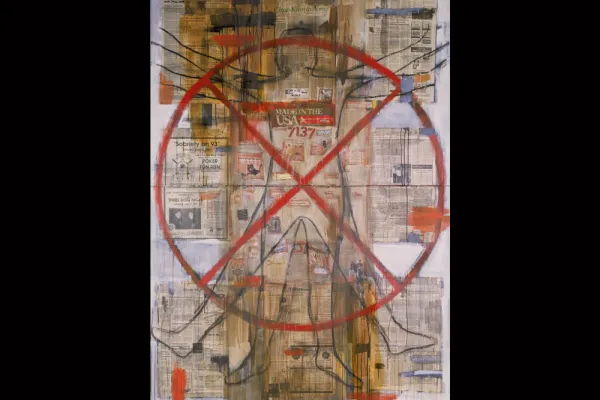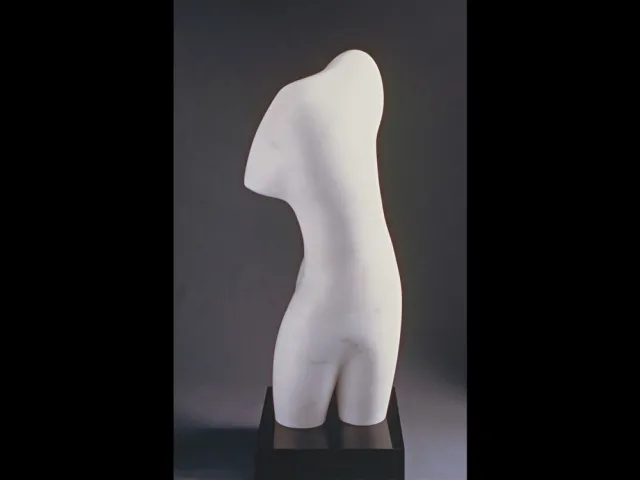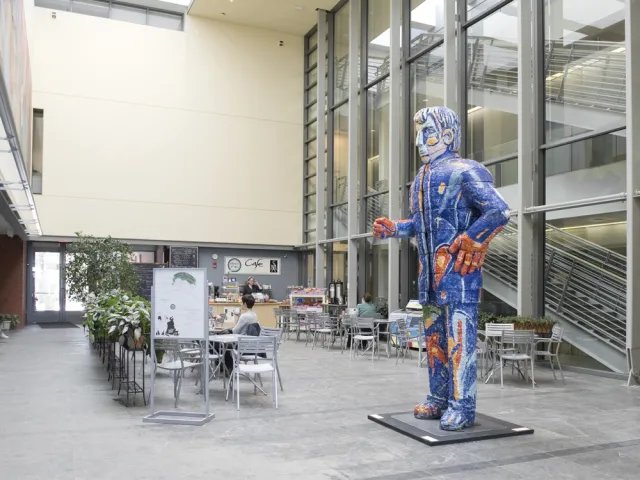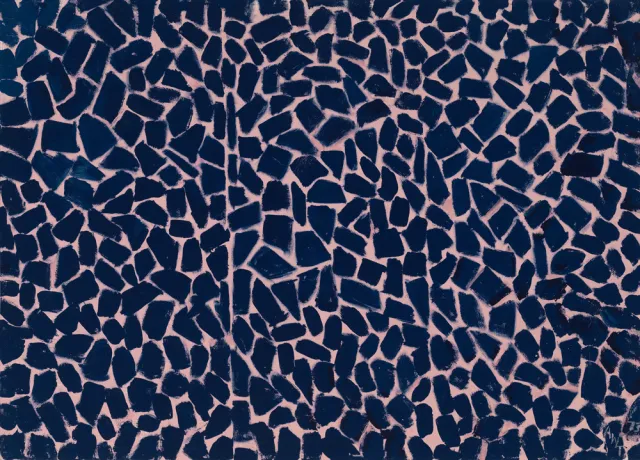‘A Place of Joy’
Smith Arts
Alums reflect on how the Smith College Museum of Art changed the trajectory of their lives
Published December 3, 2020
Kemi Ilesanmi ’98
Executive director, The Laundromat Project arts organization
Major: Afro-American studies
Further education: Master of public administration, New York University
Favorite SCMA artwork: The Red Mean: Self Portrait, 1992, by Jaune Quick-to-See Smith; mixed media
WHAT SCMA MEANT TO ME
I spent a lot of time at the museum, art library and courtyard. It was a place of joy and respite and creative inspiration. It was one of my favorite places to meet friends.
HOW MUSEUMS SHOULD CHANGE
I would like museums to be bold as they proactively seek ways to change, shift and evolve. This means collections must expand and reprioritize; scholarship must ask new, nuanced questions; staff must reflect wider knowledge; boards must invite new voices and take risks; and diverse community members must find our work relevant and useful to their lives. This does not preclude beauty but instead expands it to include all of us.
Spaces to Be Brave
Eve Straussman-Pflanzer ’99
Curator and head of Italian and Spanish paintings department, National Gallery of Art
Major: English
Further education: Doctorate in art history, Institute of Fine Arts, New York University
Favorite SCMA artwork: The Liberation of Saint Peter, 1640s, by Antonio de Bellis; oil painting
HOW MUSEUMS SHOULD CHANGE
I would like art museums to become braver and more visionary spaces. Museums should take a leadership role in society as an advocate for the arts and all members of society. There is no place or time for tentativeness and reserve. We need fiery and courageous leadership in museums, especially right now.
Toward Inclusivity in Art
Andrea Rosen ’09
Curator, Fleming Museum of Art, University of Vermont
Major: Studio art
Further education: Master’s in art history and certificate in museum studies, Tufts University
Favorite SCMA artwork: Torso, 1953, by Hans Arp; white marble sculpture.
As you walk around it, the woman’s figure morphs; from every angle she’s a different body in a different position.
WHAT SCMA MEANT TO ME
Working at the Smith museum in several capacities as a student was an incalculable boost to my career in museums, as were the many museum-specific career workshops organized by the museum staff. Now SCMA staffers who were my mentors are my colleagues, and I’ve been honored to include loans from SCMA’s fantastic collection in exhibitions I’ve curated elsewhere.
HOW MUSEUMS SHOULD CHANGE
Museums are not inclusive enough, and I say that as a white woman who has been working in museums for 14 years. Obstacles for museum workers of color need to be acknowledged, examined and chipped away at. White museum staffers need to learn to listen to communities of color and transform accordingly. The colonial roots of museums and their collections must be made explicit and transparent to our visitors. I acknowledge my own complicity in failing to prioritize this work in the past, and I’m working with my colleagues at the Fleming to start to change that.
Broadening the Stories Museums Tell
Sophie Ong ’12
Hirsch Curatorial Fellow, Toledo Museum of Art
Major: Art history; chemistry minor; museum studies concentration
Further education: master of arts, doctoral candidate (Northern European art of the late Middle Ages), Rutgers University
Favorite SCMA artwork: Man in Abstract Suit, 1988, by Viola Frey; ceramic sculpture.
Its installation in the atrium brought art into the students’ space, uniting the museum with the classroom and library side of Hillyer. And it has such a vibrant and varied surface— there was always some new detail to notice.
WHAT SCMA MEANT TO ME
SCMA shaped my life completely. I came to Smith as a biology major but enjoyed my art conservation STRIDE project with [art conservator] David Dempsey so much that I switched to art history and picked up a chemistry minor. Working as a student museum educator and in conservation—where we put on a yearly exhibit of our frames—provided a foundation for a range of different museum work. I feel like I’ve come a bit full circle, as I am back at the Toledo Museum of Art, where I first interned in 2012 following my graduation from Smith.
Beyond Museum Walls
Shama Rahman ’13
Director of brand strategy, New York magazine
Major: Economics; art history minor; museum studies concentration
Favorite SCMA artwork: Morning in the Bowl of Night, 1973, by Alma Thomas; acrylic painting.
It is a highlight of my time on the Visiting Committee to have helped acquire this work into our collection.
WHAT SCMA MEANT TO ME
Working at SCMA and being part of the museum studies concentration program has significantly shaped my academic, personal and career growth, both during my years at Smith and beyond. As a marketing assistant under Margi Caplan [associate director for marketing and communications], I learned how to be an empathetic communicator, lean into my affinity for collaborating with organizations outside museum walls and focus on broadening the audiences who felt comfortable in institutional spaces. [In] my capstone for the concentration, I focused on the museum industry in Abu Dhabi, including research on a Guggenheim outpost in the United Arab Emirates. After graduation, I landed my dream job of working in marketing at the Guggenheim Museum in New York, and then at the Whitney Museum of American Art, which was part of another paper I wrote during my time at Smith for a course I took with art history professor Barbara Kellum. I left museums to work in media, but I’m grateful to be actively connected to the SCMA Visiting Committee as the youngest member in its history and to help advise the very same people who guided me when I was first starting out.
HOW MUSEUMS SHOULD CHANGE
Art museums must improve how they support their staff. Working within institutions, I saw how racism, sexism, elitism and the socioeconomic divide operated to limit equity. I am so happy with the direction my career has taken, but I also know that if there were better wages and conditions afforded to me and others like me, more of us would stay within the field. Moving forward, museums must do more than talk in vague terms to actually effect change, and that work extends from the artwork on the walls to the staff working within the institution.
This story appears in the Winter 2020-21 issue of the Smith Alumnae Quarterly.
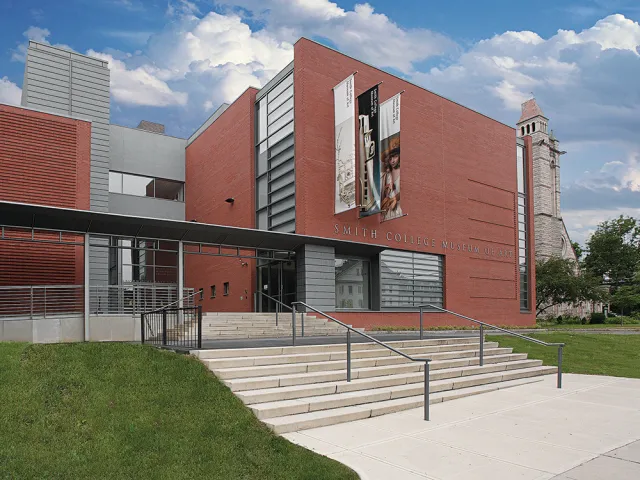
SCMA at 100
The Smith College Museum of Art houses more than 27,000 objects representing a diversity of art, cultures and time periods. Enjoy the following stories in celebration of the museum’s centennial.
- Director and Chief Curator Jessica Nicoll ’83, A Place to Celebrate Art
- Janice Carlson Oresman ’55, Connoisseurship for Life
- Thelma Golden ’87, ‘Central to My College Universe’
- ‘Oh, Good, There’s a Museum Shop!’
- A Rich Resource for Teaching: Museum collection inspires faculty across the curriculum
